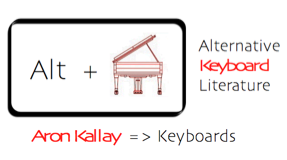
We may have missed the first volleys of southern California’s MicroFest — concerts devoted to tunings other than our standard, boring old 12 steps to the octave — but there’s still plenty of time to get your octave-tweak on; events will be running all the way to the end of June. Composers represented include Cage, Harrison, Partch, Crumb, Lachenmann, Tenney, Alves, Corigliano, Gosfield, Haas, Ives, Wadle, Schweinitz, McIntosh, Kriege, etc. etc… Quite a constellation of stars. For all the details head over to their website.
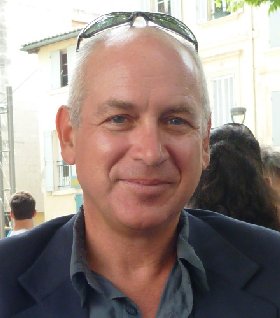 But I wanted to draw your attention to the MicroFest concert happening this weekend, since it involves an old pal and S21 alum. On Saturday April 24, 7:00 PM at the Steinway Piano Gallery (314 N. Robertson Blvd., West Hollywood), pianist Aron Kallay with Grace Zhao will be giving a concert of music for “quartertuned+” pianos. In addition to pieces by Charles Ives, John Corigliano, Bill Alves, Georg Haas, Annie Gosfield and my internet friend “Down Under”, Kraig Grady, Kallay will be giving the premiere live performance of Jeff Harrington‘s monstrously difficult Prelude #3 for 19ET Piano. It’s taken a lot of years for someone to step up and take on one of Jeff’s preludes, many of which we’ve known and loved for years only through Jeff’s own MIDI realizations. It’s going to be fun, I’m telling you. You can hear part of the piece in this KPFK interview with Kallay.
But I wanted to draw your attention to the MicroFest concert happening this weekend, since it involves an old pal and S21 alum. On Saturday April 24, 7:00 PM at the Steinway Piano Gallery (314 N. Robertson Blvd., West Hollywood), pianist Aron Kallay with Grace Zhao will be giving a concert of music for “quartertuned+” pianos. In addition to pieces by Charles Ives, John Corigliano, Bill Alves, Georg Haas, Annie Gosfield and my internet friend “Down Under”, Kraig Grady, Kallay will be giving the premiere live performance of Jeff Harrington‘s monstrously difficult Prelude #3 for 19ET Piano. It’s taken a lot of years for someone to step up and take on one of Jeff’s preludes, many of which we’ve known and loved for years only through Jeff’s own MIDI realizations. It’s going to be fun, I’m telling you. You can hear part of the piece in this KPFK interview with Kallay.
 Then on Sunday April 25th, back NYC -way, our long-time contributor Elodie Lauten is celebrating the 2-CD release of a whole passel of her piano music from the last 30 years, PIANO WORKS REVISITED (Unseen Worlds), with a performance at the Gershwin Hotel (4PM, 7 East 27 Street, $10). Elodie herself will perform the Variations on the Orange Cycle (cited by Chamber Music America as among the 100 best works of the 20th century), and some of the early piano tunes that featured on WNYC as early as 1981; also the Sonate Modale, released for the first time on these CDs. The Gershwin Hotel main lobby provides a beautiful grand piano and a colorful and elegant environment for this special venue, and there’ll be refreshments. So come on out and cheer the home team!
Then on Sunday April 25th, back NYC -way, our long-time contributor Elodie Lauten is celebrating the 2-CD release of a whole passel of her piano music from the last 30 years, PIANO WORKS REVISITED (Unseen Worlds), with a performance at the Gershwin Hotel (4PM, 7 East 27 Street, $10). Elodie herself will perform the Variations on the Orange Cycle (cited by Chamber Music America as among the 100 best works of the 20th century), and some of the early piano tunes that featured on WNYC as early as 1981; also the Sonate Modale, released for the first time on these CDs. The Gershwin Hotel main lobby provides a beautiful grand piano and a colorful and elegant environment for this special venue, and there’ll be refreshments. So come on out and cheer the home team!
 Saturday, March 27 at
Saturday, March 27 at 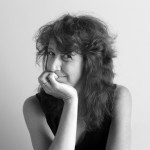 Monday, March 15 at
Monday, March 15 at 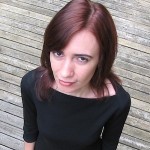 March 4th-6th at
March 4th-6th at 
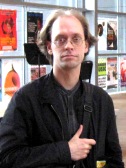 Many of our regular s21 readers should be familiar with Amsterdam’s own
Many of our regular s21 readers should be familiar with Amsterdam’s own 
